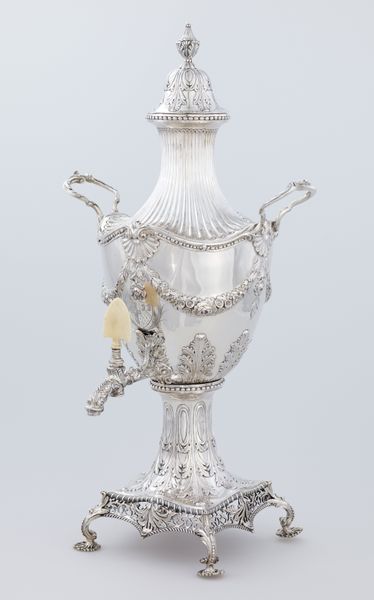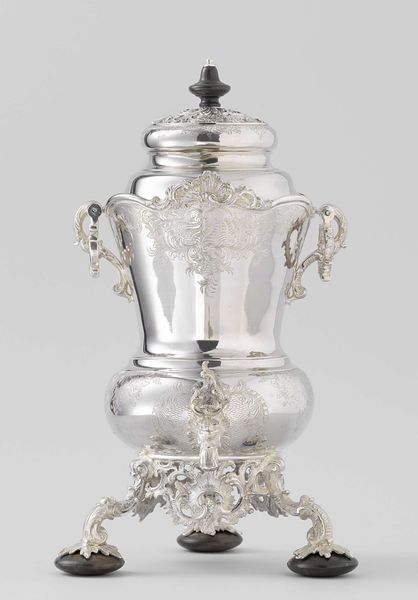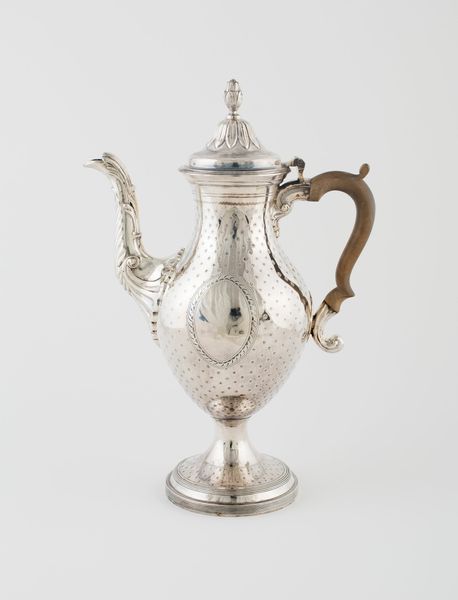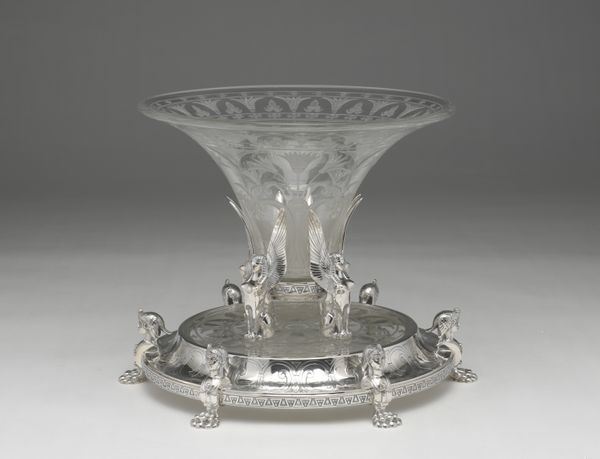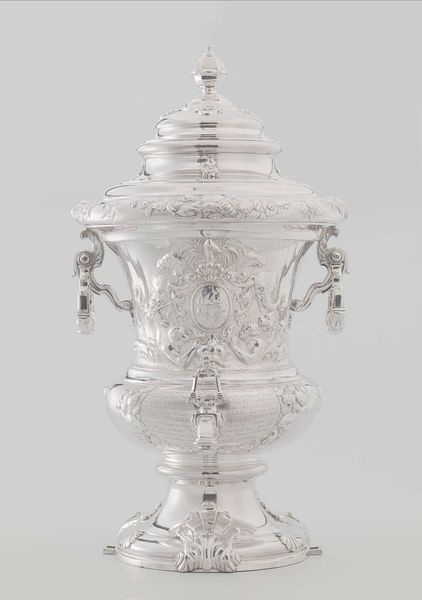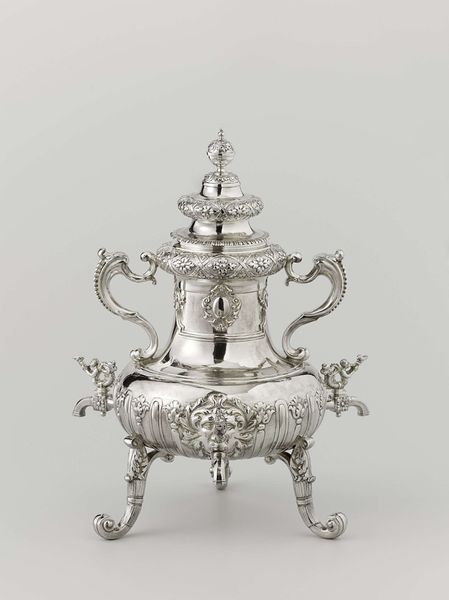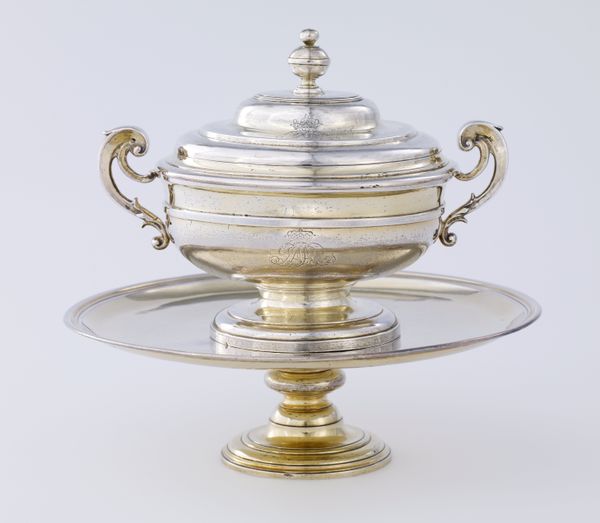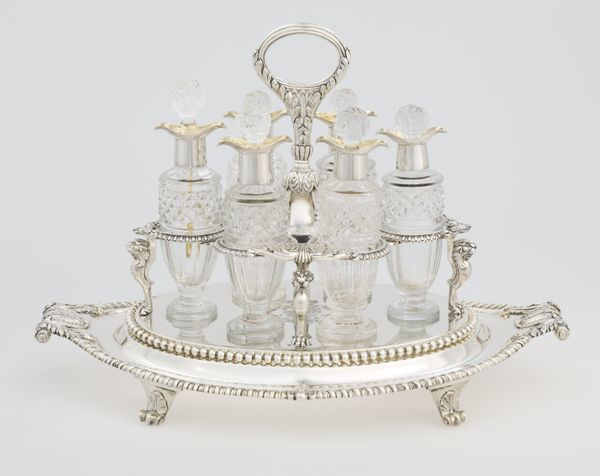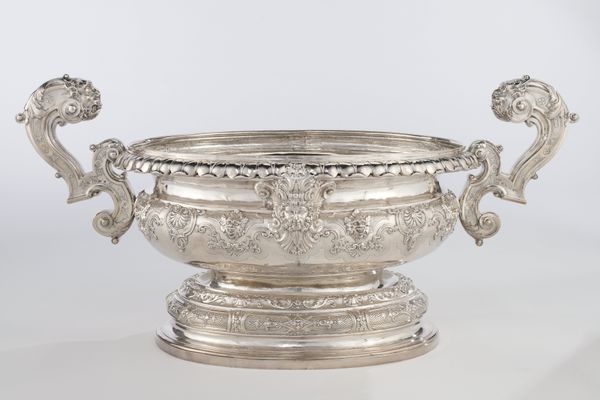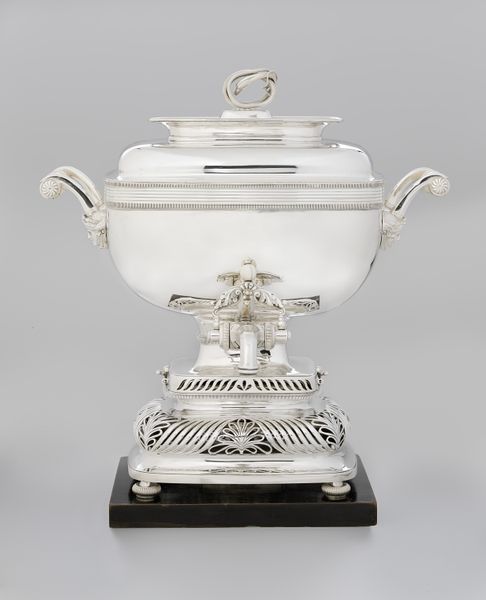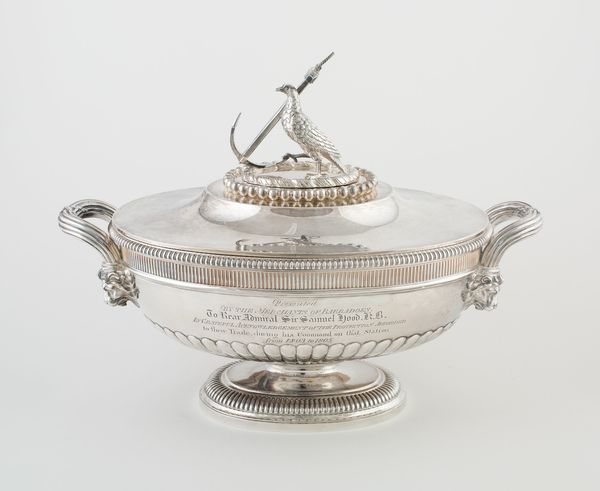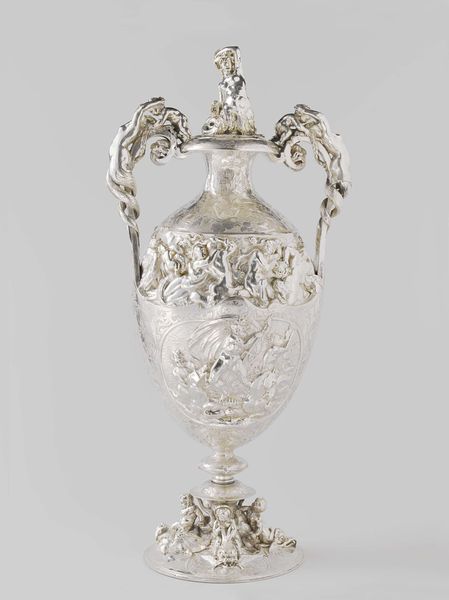
Dimensions: 18 3/4 x 17 5/8 x 20 3/4 in. (47.6 x 44.8 x 52.71 cm)
Copyright: Public Domain
Curator: Before us stands an Epergne, crafted from silver between 1790 and 1791. It currently resides here at the Minneapolis Institute of Art. Editor: My first thought is...opulence. Just the sheer amount of meticulously worked silver! It really shouts about excess and luxury. Curator: Precisely. Think about the process behind creating this. Silver wasn’t exactly readily available for all in the late 18th century. The silversmithing profession itself involved intensive labour. Consider also who could commission something like this. Editor: Ah, yes. This object screams of social stratification. We're talking about the upper echelons, aristocracy, the kind who could not only afford such extravagant pieces, but whose entire lifestyle perpetuated systems of inequality. Was this created for a specific celebration, do you think, or for constant display of power? Curator: While we lack explicit records, it is quite telling that an Epergne—intended as a centerpiece for elaborate table displays—often becomes a focal point for reinforcing the idea of conspicuous consumption, and displays the fruits of colonial endeavours, I think. The sheer volume of resources... Editor: Absolutely! Food became theatre; wealth, performative. It wasn't just sustenance but symbolic power, especially when placed at the center of a table. And to think about all the people excluded from that table because of class, race, and gender... The history embedded within this seemingly simple object. Curator: Consider also how the Baroque styling emphasizes that excess, that overflowing, cascading form, reflected not just in aesthetics but in societal structures. Each swirling detail speaks of specific modes of labor practices. The materials used represent control over a globalized supply chain even then. Editor: I now look at it differently. Beyond its material richness, it tells such an intricate and problematic story about the era. What feels, at first, simply decorative in a superficial way has an uncomfortable story, even legacy. Curator: Exactly! Examining objects like this allow us to address wider narratives around labor, materials and modes of consumption. Editor: Thank you, this new perspective gives us so much more to think about, and it certainly will reshape my way of engaging with similar historical objects going forward.
Comments
No comments
Be the first to comment and join the conversation on the ultimate creative platform.


